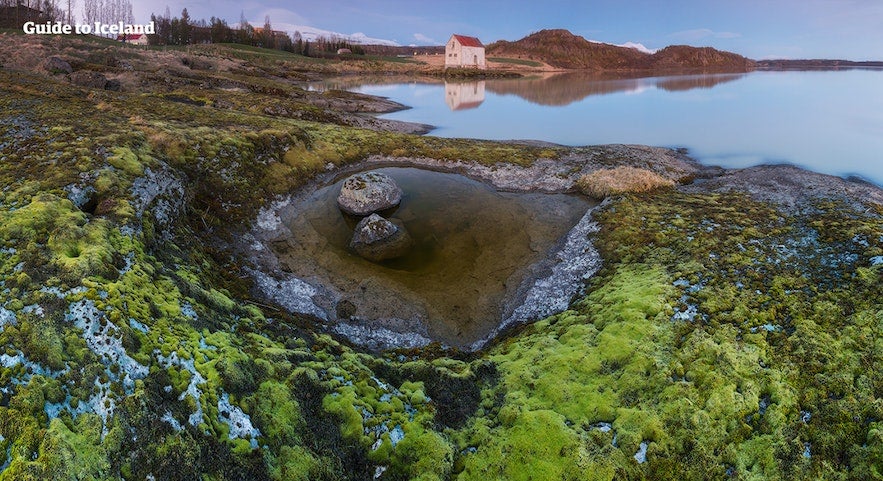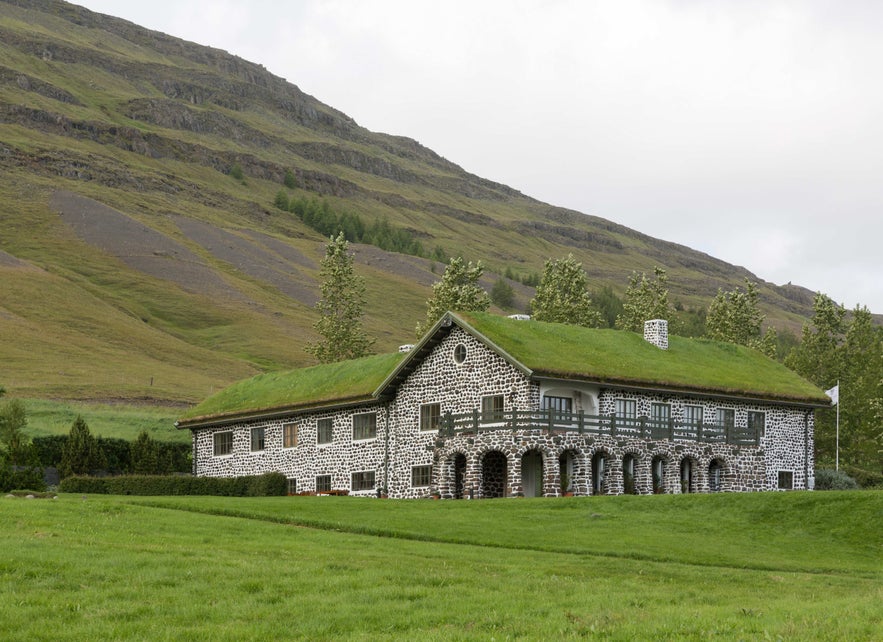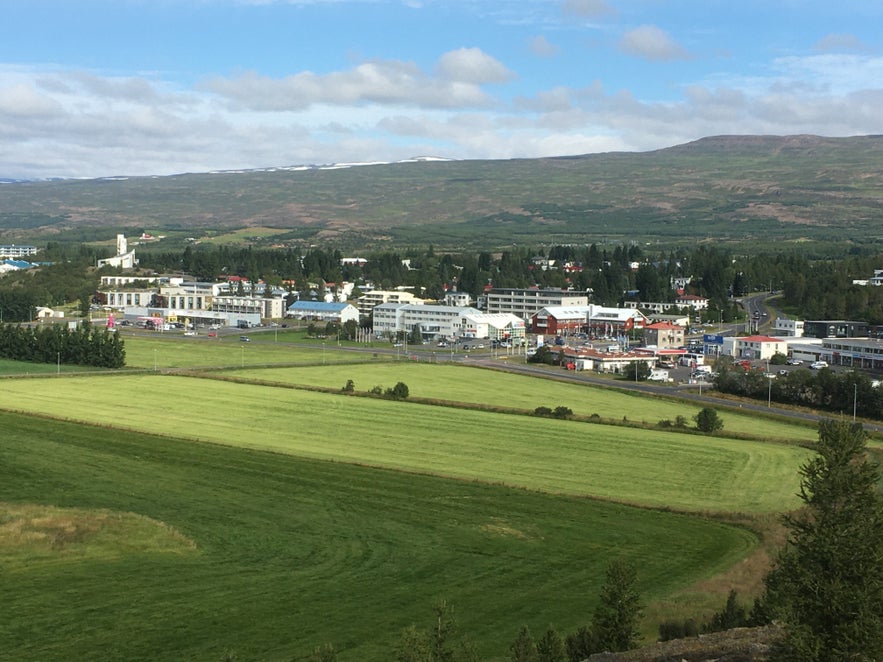Fljotsdalur Valley Travel Guide

Travelers taking a self-drive tour in Egilsstadir and the Eastfjords, like this 11-Day Ring Road and Eastfjords Tour, should consider exploring the green valley of Fljotsdalur along the way. Visitors can enjoy plenty of accommodation options in the area, where they can add fun trips like horseback riding and scenic hiking tours around or near Fljotsdalur valley.
The East Icelandic valley is a beautiful expanse of picture-worthy nature walks filled with historical and natural wonders, like the Hengifoss waterfall and Lagarfljot lake. Its location in the east, bordering the Highlands of Iceland, is one of the best places to explore the beauty of the land of fire and ice.
What To Know About Fljotsdalur Valley
Fljotsdalur valley, Fljótsdalur in Icelandic, is home to numerous natural sights travelers can visit any time of the year. It has some of the most rugged terrains in Iceland for those looking for an authentic nature adventure.
Like the rest of the region, the valley is known for its green lands, thriving wildlife, fertile bodies of water, and towering mountains. But Fljotsdalur is probably one of the best representations of East Iceland because of its lush valley that borders the Vatnajokull National Park.
The Fljotsdalur Municipality
The scenic municipality of the same name, Fljotsdalur or Fljotsdalshreppur, is located within the valley. The area is home to around 100 inhabitants scattered throughout the vast 585 square miles (1516 square kilometers).
The municipality's early residents are known to be the first Icelanders to do commercial forestry. The valley is rich in forest covers and tree farms, from birch trees to Icelandic native trees. For this reason, the area is historically famous for producing wood products like parquet, timber, and even Christmas trees.
Since the valley also has fertile grasslands, sheep farming is a significant activity in the town for the residents. Meat, wool, and even milk are the top products gathered from these animals.
But in recent years, the interest in the region is thanks to its beautiful natural attractions. As a result, Fljotsdalur's area has recently seen an uptick in services and recreation, giving people the opportunity to enjoy everything it offers.
Although most Icelandic guided tours would not include a trip to Fljotsdalur, you can take a detour from your Ring Road adventure to visit this beautiful area.
What to See in Fljotsdalur Valley and Nearby
The geographic position of the Fljotsdalur valley in East Iceland is a great reason to visit the area. Although it isn't directly around tourist routes like the Ring Road, its proximity to beautiful attractions in the region like the Highlands and Vatnajokull glacier is enough reason to visit it.
Likewise, the valley on its own is picturesque and teeming with attractions that travelers should not miss. You can expect to see numerous sites, such as the town of Egilsstadir and the Hengifoss waterfall, on an easy day trip from the Fljotsdalur valley.
Lagarfljot Lake
The fertile waters of Lagarfljot lake and river are to the north of the valley. Lagarfljot lake is 15.5 miles (25 kilometers) long and 367 feet (112 meters) deep. Lake Lagarfljot is excellent for family outings and holds some of Iceland's best picnic spots.
The meltwater or glacial runoff that feeds the lake comes from the ice cap near the area.
The most popular feature of the lake is local folklore. According to local stories, a giant beast called Lagarfljot Wyrm roams the bottom of the river lake. The serpentine beast rivals the popularity of Scotland's Loch Ness monster. This legend attracts tourists to the lake and valley.
The first sighting of this mythical creature happened in 1345. Historians then labeled it a "marvel" and kept records of it in their 15th-century annals. It has received slight mentions in future maps and even baroque poems.
There were even international talks and reports of camera footage alleging the Lagarfljot worm's existence in 2012. Whether the creature is real or not, Lake Lagarfljot will forever be an iconic attraction in East Iceland.
Skriduklaustur Culture Center
Another attraction in the valley is the Skriduklaustur culture center, which houses some great histories that Fljotsdalur touts. Gunnar Gunnarsson, a famous Icelandic prose writer, lived in a mansion on the site. The center features a museum and permanent exhibitions about Gunnar's life and works.

Photo from Wikimedia, Creative Commons, by Villy Fink Isaksen. No edits made.
Gunnarsson's mansion was erected in 1939 after he returned home from living in Denmark for 30 years. This farmstead is also one of the visiting centers for the Vatnajokull National Park, the largest glacier in Europe, which you can explore on Ice Cave Tours from Reykjavik.
The Fljotsdalur Power Station
Meanwhile, the valley of Fljotsdalur also houses the largest power plant in Iceland. The Fljotsdalur Power Station, also locally known as Karahnjukar Hydropower Plant, is famous for its mountainous landscapes and massive dams.
Egilsstadir Township

Photo from Wikimedia, Creative Commons, by Fabio Achilli. No edits made
The town of Egilsstadir has a population of over 2,400 residents. It is a traveler's primary source of services and thoroughfare in East Iceland, as it also has an international airport. The central town connects tourists to the remote areas of the Eastfjords and the Vatnajokull National Park.
For travelers who plan on exploring East Iceland or the ring road for multiple days, Egilsstadir is an excellent place for a stop. The town has everything you need, from gas stations, supermarkets, accommodations, and restaurants.
People who are into music festivities can enjoy the annual music festivals in the city. These festivals include Hringras, Orsteiti Town Festival, and Jazz Festival.
The Fljotsdalur valley is 56 miles (90 kilometers) from Egilsstadir.
Hengifoss Waterfall
The most popular activity in the Fljotsdalur valley area is hiking. Various hiking trails within and near the valley offer easy to challenging routes. One hiking trail leads to one of the most famous waterfalls in Iceland, the Hengifoss waterfall.
The majestic Hengifoss waterfall is one of the most visited tourist attractions in East Iceland. Thanks to its towering basalt layers, the waterfall is the third tallest waterfall in Iceland at 420 feet (128 meters).
The waterfall is just a short drive of 32 miles (51 kilometers) from the valley. Travelers will find the attraction convenient to visit because a wide parking lot is waiting for you before the hike.
The hiking trail to the waterfall, including the return trip, may cover a little over two hours. The hike up is more challenging than the return trip as the route is an upward climb. But the gorges along the way are a beautiful distraction from exhaustion.
Once you reach the Hengifoss waterfall, a scenic view of crystal clear waters cascading from the colorful basaltic layers is what awaits you. There, you will see horizontal red clay layers adorning the waterfall's cliff.
Suppose you are still up for an adventure while in the area. Another beautiful waterfall is just near Hengifoss. Litlanesfoss waterfall is magnificent with its two-tiered landscape.
Hallormsstadaskogur National Forest
Once tourists have had their fill enjoying the waterfall, they can visit Iceland's most prominent national forest, Hallormsstadaskogur. This vast wonder covers an area of 286 square miles (740 square kilometers), featuring many tree species.
Throughout history, the country has suffered deforestation and excessive wood use. But this trend is changing in recent years. The Hallormsstadaskogur National Forest is Iceland's premier success story of reforestation.
The Icelandic national forest has approximately 80 species of trees, both native and foreign. These trees include dwarf birch, mountain birch, and lodgepole pine. With this thick forest cover, birdlife also thrives in the area.
Travelers traversing the ring road can easily spot Hallormsstadaskogur as most of these forest lands are near the tourist road. The Fljotsdalur valley is just 38 miles (62 kilometers) from the national forest.
Getting to Fljotsdalur Valley
Getting to the Fljotsdalur valley could be an all-day endeavor as it is 393 miles (633 kilometers) from Reykjavik.
Despite the long travel, tourists having self-drive tours on the ring road will enjoy the journey. The whole country of Iceland is overflowing with stunning natural landscapes, from mountains to glaciers and waterfalls.
A common stop in East Iceland is the town of Egilsstadir. From there, the valley is roughly 56 miles (90 kilometers). Along the way, you will pass through awe-inspiring views of the Hallormsstadaskogur National Forest and Lagarfljot lake.
Tourists can also fly into Egilsstadir from Reykjavik airport for a faster trip. The flight time for that trip is only about an hour.
Attractions Nearby
Popular categories

Download Iceland’s biggest travel marketplace to your phone to manage your entire trip in one place
Scan this QR code with your phone camera and press the link that appears to add Iceland’s biggest travel marketplace into your pocket. Enter your phone number or email address to receive an SMS or email with the download link.


















